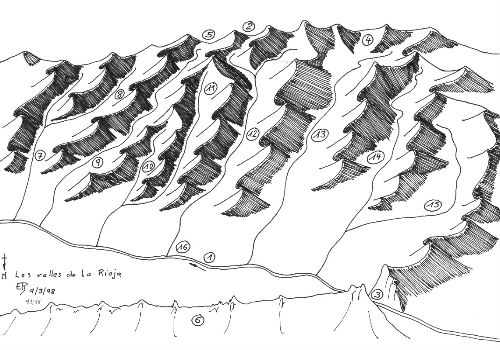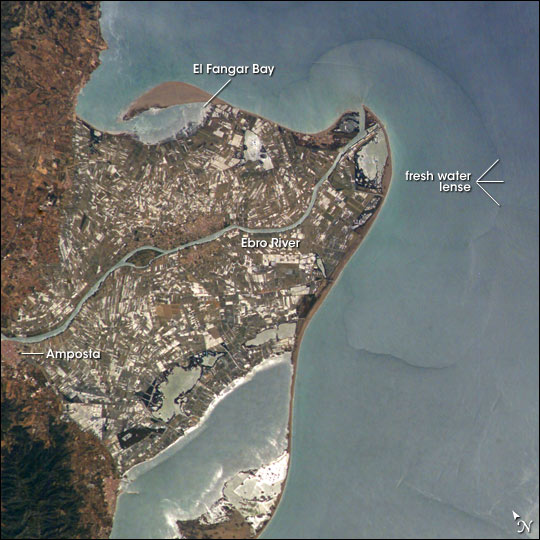|
Logroño
Logroño ( , , ) is the capital of the autonomous community of La Rioja (Spain), La Rioja, Spain. Located in the north of the Iberian Peninsula, primarily in the right (South) bank of the Ebro River, Logroño has historically been a place of passage, such as the Camino de Santiago. Its borders were disputed between the Iberian kingdoms of Crown of Castile, Castille, Kingdom of Navarre, Navarre and Crown of Aragon, Aragon during the Middle Ages. The population of the city in 2021 was 150,808 while the metropolitan area included nearly 200,000 inhabitants. The city is a centre of trade of Rioja wine, for which the area is noted, and manufacturing of wood, metal and textile products. Etymology Origin of the name The origin of this toponym is, as for many other places, unknown. The name ''Lucronio'' was first used in a document from 965 where García Sánchez I of Pamplona donated the place so named to the Monasteries of San Millán de la Cogolla, Monastery of San Millán. In ... [...More Info...] [...Related Items...] OR: [Wikipedia] [Google] [Baidu] |
La Rioja (Spain)
La Rioja () is an autonomous community and province in Spain, in the north of the Iberian Peninsula. Its capital is Logroño. Other cities and towns in the province include Calahorra, Arnedo, Alfaro, Haro, Santo Domingo de la Calzada, and Nájera. It has an estimated population of 315,675 inhabitants (INE 2018), making it the least populated autonomous community of Spain. It covers part of the Ebro valley towards its north and the Iberian Range in the south. The community is a single province, so there is no provincial deputation, and it is organized into 174 municipalities. It borders the Basque Country (province of Álava) to the north, Navarre to the northeast, Aragón to the southeast ( province of Zaragoza), and Castilla y León to the west and south (provinces of Burgos and Soria). The area was once occupied by pre-Roman Berones, Pellendones and Vascones. After partial recapture from the Muslims in the early tenth century, the region became part of the Kingd ... [...More Info...] [...Related Items...] OR: [Wikipedia] [Google] [Baidu] |
Conrado Escobar
Conrado Escobar Las Heras (born 10 June 1964) is a Spanish People's Party (PP) politician, serving as mayor of Logroño in La Rioja since 2023. He has held elected office at municipal and regional level, and served as a minister in the government of La Rioja. He has sat in both houses of the Cortes Generales, namely the Congress of Deputies and the Senate of Spain. Biography Early and personal life Born in Logroño, La Rioja, Escobar was educated by the Marists. He graduated with a law degree from the University of Oviedo and also possesses diplomas in territorial organisation, and human resources. He then left his job in Asturias to set up his own law firm in his hometown. As of 2023, Escobar has three children with his wife Eva, who is from Asturias. Early political career (1991–2011) Escobar served on his hometown's city council from 1991 to 1995, and again from 2003 to 2007. In between, he was the People's Party (PP) spokesperson in the Parliament of La Rioja, as well as ... [...More Info...] [...Related Items...] OR: [Wikipedia] [Google] [Baidu] |
Co-Cathedral Of Logroño
The Co-cathedral of Santa María de la Redonda (Spanish: ''Concatedral de Santa María de la Redonda'') is a co-cathedral located in Logroño, in La Rioja, Spain. The name "redonda" refers to the rounded shape of an earlier church on the site. It had the status of collegiate church from the 15th century when Logrono became a city. The present building was raised to the rank of cathedral in the 20th century. It belongs to the Roman Catholic Diocese of Calahorra y La Calzada-Logroño, which has two other cathedrals. The church has two elaborately decorated towers, each containing a set of bells. The sidewall of the church has a clock split into three faces : one each for the hour, minute and second. The entrance to the church is set in an alcove filled with Christian sculptures, protected by high iron gates and netting to prevent people or birds entering. The towers are similarly netted but the famous storks which inhabit Logroño can still nest on the highest ledges. The Flemi ... [...More Info...] [...Related Items...] OR: [Wikipedia] [Google] [Baidu] |
Autonomous Communities Of Spain
The autonomous communities () are the first-level political divisions of Spain, administrative divisions of Spain, created in accordance with the Constitution of Spain, Spanish Constitution of 1978, with the aim of guaranteeing limited autonomy to the nationalities and regions of Spain, nationalities and regions that make up Spain. There are 17 autonomous communities and two autonomous cities (Ceuta and Melilla) that are collectively known as "autonomies". The two autonomous cities have the right to become autonomous communities. The autonomous communities exercise their right to self-government within the limits set forth in the constitution and Organic Law (Spain), organic laws known as Statute of Autonomy, Statutes of Autonomy, which broadly define the powers that they assume. Each statute sets out the devolved powers () for each community; typically those communities with stronger local nationalism have more powers, and this type of devolution has been called ''asymmetric ... [...More Info...] [...Related Items...] OR: [Wikipedia] [Google] [Baidu] |
Rioja Wine
Rioja () is a wine region in Spain, with '' denominación de origen calificada'' (D.O.Ca., "Qualified Designation of Origin," the highest category in Spanish wine regulation). Rioja wine is made from grapes grown in the autonomous communities of La Rioja and Navarre, and the Basque province of Álava. Rioja is further subdivided into three zones: Rioja Alta, Rioja Oriental and Rioja Alavesa. Many wines have traditionally blended fruit from all three regions, though there is a slow growth in single-zone wines. History * The harvesting of wine in La Rioja has an ancient lineage with origins dating back to the Phoenicians and the Celtiberians. * The earliest written evidence of the existence of the grape in La Rioja dates to 873, in the form of a document from the Public Notary of San Millán dealing with a donation to the San Andrés de Trepeana ( Treviana) Monastery. As was the case in many Mediterranean lands in mediaeval times, monks were the main practitioners of winemaking ... [...More Info...] [...Related Items...] OR: [Wikipedia] [Google] [Baidu] |
Ebro
The Ebro (Spanish and Basque ; , , ) is a river of the north and northeast of the Iberian Peninsula, in Spain. It rises in Cantabria and flows , almost entirely in an east-southeast direction. It flows into the Mediterranean Sea, forming a delta in the Terres de l'Ebre region, in southern Catalonia. In the Iberian peninsula, it ranks second in length after the Tagus and second in discharge volume, and drainage basin, after the Douro. It is the longest river entirely within Spain; the other two mentioned flow into Portugal. The Ebro flows through many cities (): Reinosa in Cantabria; Frías and Miranda de Ebro in Castile and León; Haro, Logroño, Calahorra, and Alfaro in La Rioja; Tudela in Navarre; Alagón, Utebo, and Zaragoza in Aragon; and Flix, Móra d'Ebre, Benifallet, Tivenys, Xerta, Aldover, Tortosa, and Amposta in the province of Tarragona (Catalonia). Geography Upper part and tributaries The source of the river Ebro is in the Cantabrian Moun ... [...More Info...] [...Related Items...] OR: [Wikipedia] [Google] [Baidu] |
Valladolid
Valladolid ( ; ) is a Municipalities of Spain, municipality in Spain and the primary seat of government and ''de facto'' capital of the Autonomous communities of Spain, autonomous community of Castile and León. It is also the capital of the province of Valladolid. It has a population of 300,618 people (2024 est.). The city is located roughly in the centre of the northern half of the Iberian Peninsula's Meseta Central, at the confluence of the Pisuerga River, Pisuerga and Esgueva rivers before they join the Duero, surrounded by winegrowing areas. The area was settled in pre-Roman times by the Celtic Vaccaei people, and then by Ancient Rome, Romans themselves. The settlement was purportedly founded after 1072, growing in prominence within the context of the Crown of Castile, being endowed with fairs and different institutions such as a collegiate church, University of Valladolid, University (1241), Court (royal), Royal Court and Royal Audiencia and Chancillería of Valladolid, C ... [...More Info...] [...Related Items...] OR: [Wikipedia] [Google] [Baidu] |
Ebro River
The Ebro (Spanish and Basque ; , , ) is a river of the north and northeast of the Iberian Peninsula, in Spain. It rises in Cantabria and flows , almost entirely in an east-southeast direction. It flows into the Mediterranean Sea, forming a delta in the Terres de l'Ebre region, in southern Catalonia. In the Iberian peninsula, it ranks second in length after the Tagus and second in discharge volume, and drainage basin, after the Douro. It is the longest river entirely within Spain; the other two mentioned flow into Portugal. The Ebro flows through many cities (): Reinosa in Cantabria; Frías and Miranda de Ebro in Castile and León; Haro, Logroño, Calahorra, and Alfaro in La Rioja; Tudela in Navarre; Alagón, Utebo, and Zaragoza in Aragon; and Flix, Móra d'Ebre, Benifallet, Tivenys, Xerta, Aldover, Tortosa, and Amposta in the province of Tarragona (Catalonia). Geography Upper part and tributaries The source of the river Ebro is in the Cantabrian Mountains, in ... [...More Info...] [...Related Items...] OR: [Wikipedia] [Google] [Baidu] |
Kingdom Of Navarre
The Kingdom of Navarre ( ), originally the Kingdom of Pamplona, occupied lands on both sides of the western Pyrenees, with its northernmost areas originally reaching the Atlantic Ocean (Bay of Biscay), between present-day Spain and France. The medieval state took form around the city of Pamplona during the first centuries of the Iberian Reconquista. The kingdom had its origins in the conflict in the buffer region between the Carolingian Empire and the Umayyad dynasty, Ummayad Emirate of Córdoba that controlled most of the Iberian Peninsula. The city of Pamplona (; ), had been the main city of the indigenous Vascones, Vasconic population and was located in a predominantly Basque-speaking area. In an event traditionally dated to 824, Íñigo Arista of Pamplona, Íñigo Arista was elected or declared ruler of the area around Pamplona in opposition to Francia, Frankish expansion into the region, originally as vassal to the Córdoba emirate. This polity evolved into the Kingdom of Pam ... [...More Info...] [...Related Items...] OR: [Wikipedia] [Google] [Baidu] |
Municipalities Of Spain
The municipality (, , , , , )In other languages of Spain: *Catalan language, Catalan/Valencian (), grammatical number, sing. . *Galician language, Galician () or (), grammatical number, sing. /. *Basque language, Basque (), grammatical number, sing. . *Asturian language, Asturian (), grammatical number, sing. . is one of the two fundamental territorial divisions in Spain, the other being the Provinces of Spain, provinces. Organisation Although provinces of Spain, provinces are groupings of municipality, municipalities, there is no implied hierarchy or primacy of one over the other. Instead the two entities are defined according to the authority or jurisdiction of each (). Some autonomous communities also group municipalities into entities known as ''comarcas of Spain, comarcas'' (districts) or ''mancomunidades'' (commonwealths). The governing body in most municipalities is called ''Ayuntamiento (Spain), ayuntamiento'' (municipal council or municipal corporation, corpora ... [...More Info...] [...Related Items...] OR: [Wikipedia] [Google] [Baidu] |







